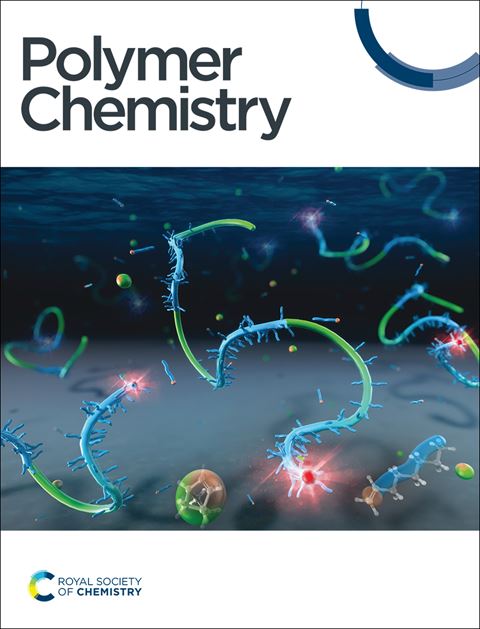Cyclobutane-linked Nanothreads through Thermal and Photochemically Mediated Polymerization of Cyclohexadiene
IF 4.1
2区 化学
Q2 POLYMER SCIENCE
引用次数: 0
Abstract
Carbon nanothreads are a rapidly growing class of 1D nanomaterials with sp3-hybridized diamond-like backbones. They are typically synthesized through pressure-induced polymerizations of aromatics, resulting in diverse structures and functionalities. Aside from precursor selection, there are limited means to control reaction pathway or polymerization outcome. Analogous to selection rules that govern outcomes in molecular chemistry, we investigated thermally and photochemically mediated pressure-induced polymerizations of 1,4-cyclohexadiene and explored the resultant products. Thermally mediated polymerization of 1,4-cyclohexadiene yields a crystalline product; yet identification of the backbone architecture is consistent with multiple reaction pathways being accessed. While support for cyclobutane structures is present, comparison to simulated structures suggests multiple products are obtained. In contrast, the recovered product obtained from the photochemically mediated polymerization exhibits different d-spacings and is consistent with simulations that support a single pathway toward cyclobutane-linked nanothreads. These results suggest that photochemistry can enable reaction selectivity in nanothread synthesis.环丁烷连接纳米线通过热和光化学介导聚合环己二烯
碳纳米线是一类快速发展的具有sp3杂化类金刚石骨架的一维纳米材料。它们通常是通过压力诱导的芳烃聚合合成的,从而产生不同的结构和功能。除了前体选择外,控制反应途径或聚合结果的手段有限。与控制分子化学结果的选择规则类似,我们研究了热和光化学介导的压力诱导1,4-环己二烯聚合,并探索了最终产物。1,4-环己二烯的热介导聚合产生结晶产物;然而,主结构的识别与访问多个反应途径是一致的。虽然对环丁烷结构的支持是存在的,但与模拟结构的比较表明,可以得到多种产物。相比之下,从光化学介导的聚合中获得的回收产物表现出不同的d-间距,并且与支持环丁烷连接纳米线的单一途径的模拟一致。这些结果表明光化学可以使纳米线合成中的反应选择性成为可能。
本文章由计算机程序翻译,如有差异,请以英文原文为准。
求助全文
约1分钟内获得全文
求助全文
来源期刊

Polymer Chemistry
POLYMER SCIENCE-
CiteScore
8.60
自引率
8.70%
发文量
535
审稿时长
1.7 months
期刊介绍:
Polymer Chemistry welcomes submissions in all areas of polymer science that have a strong focus on macromolecular chemistry. Manuscripts may cover a broad range of fields, yet no direct application focus is required.
 求助内容:
求助内容: 应助结果提醒方式:
应助结果提醒方式:


